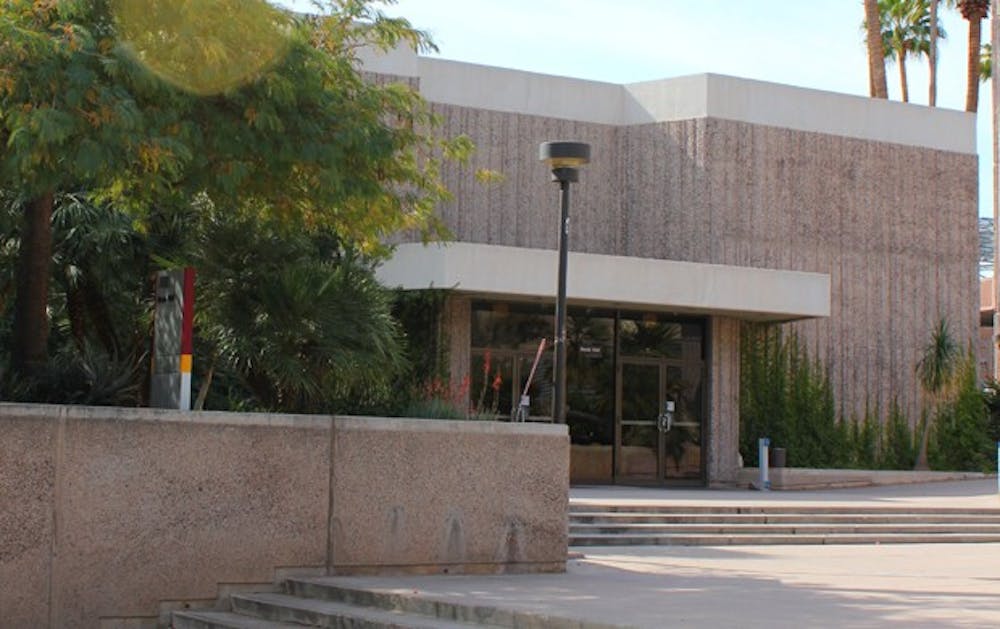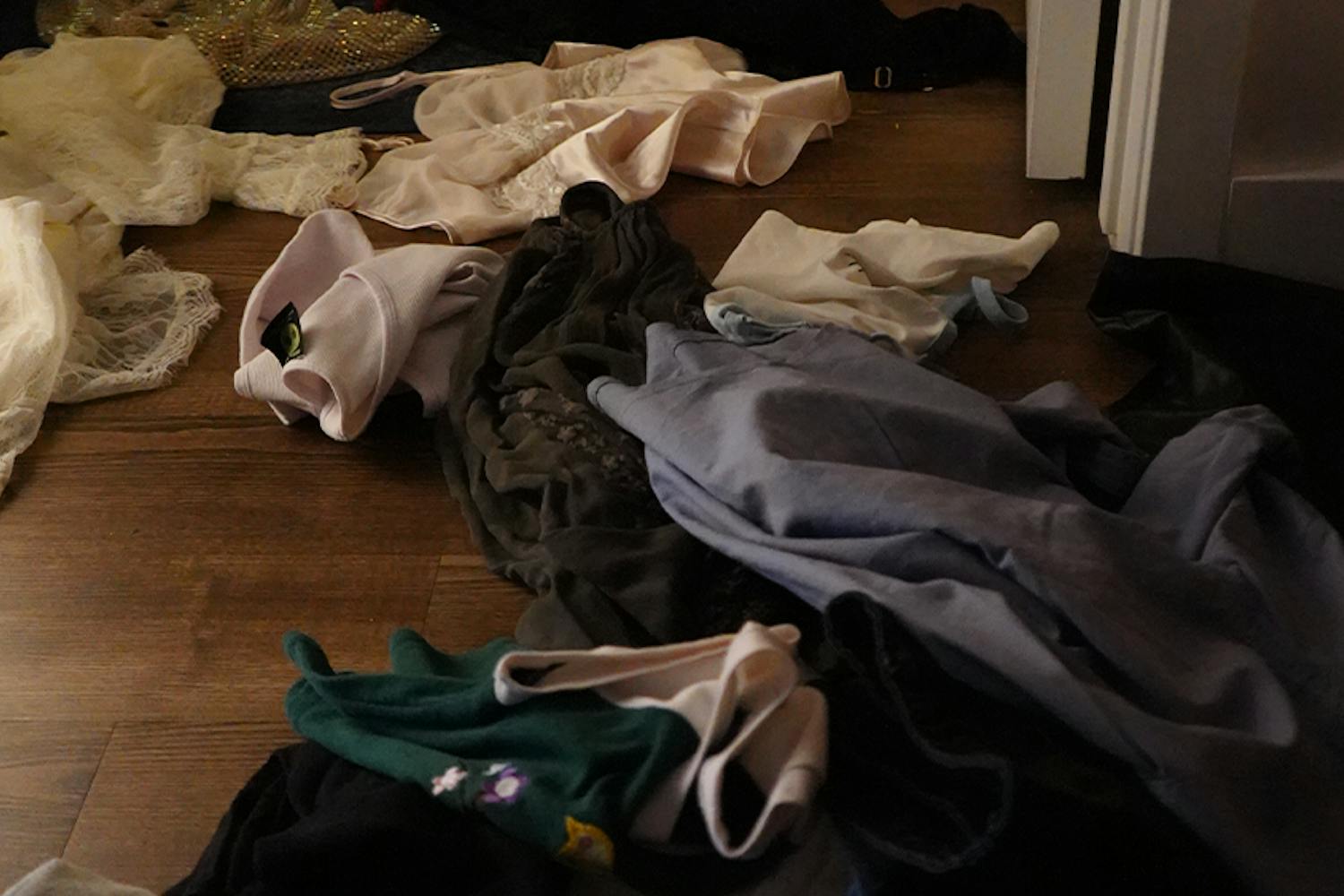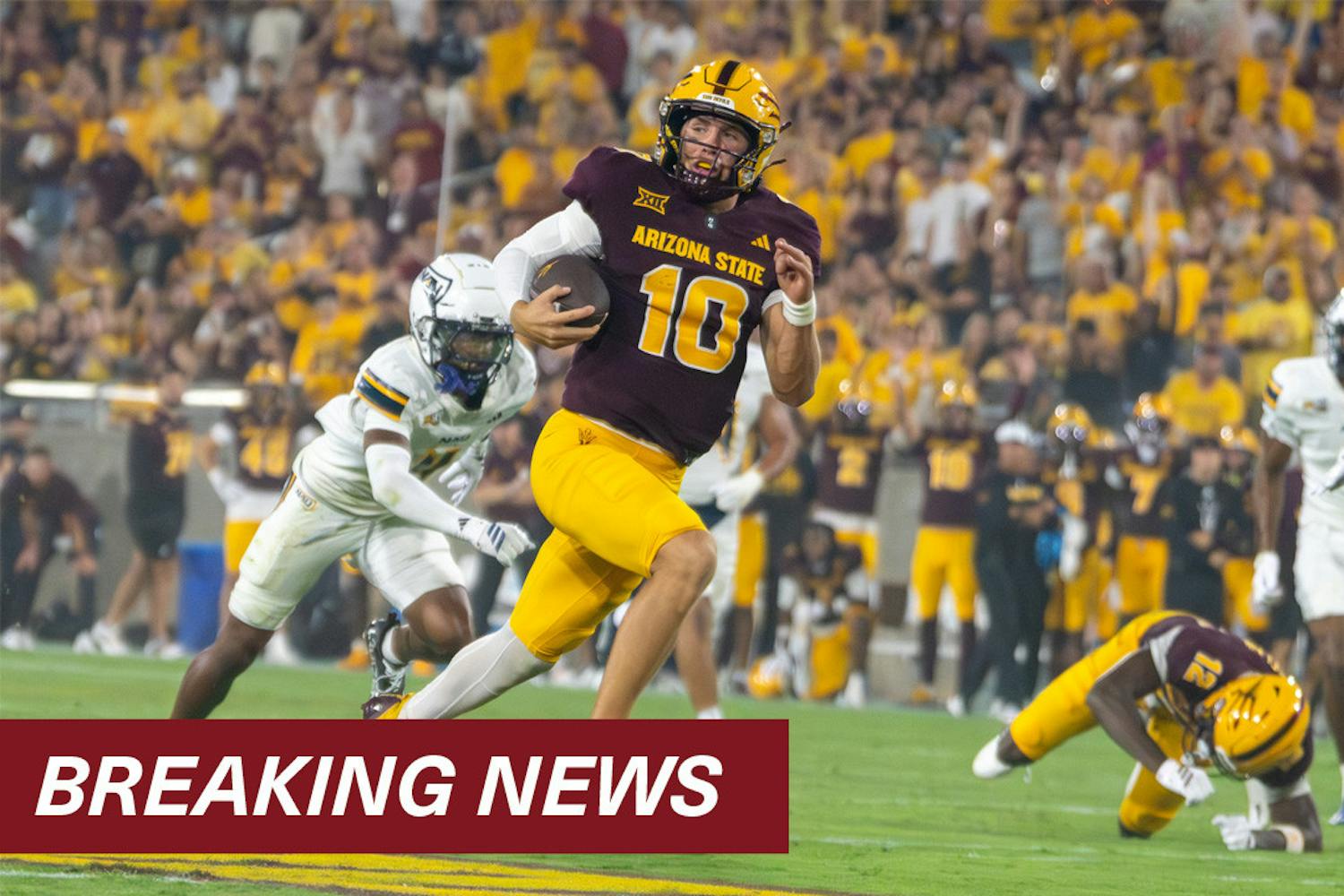For this “Best of ASU” issue of State Press Magazine, I was sent on a quest to find the “best ASU story never told.” I have visited three campuses, several periods in time, and many degrees of psychological breakdown trying to figure out exactly what that means. The results are still unclear. So what follows is simply the story of my quest – in and of itself not nearly the “best ASU story,” but a showcase of interesting or inspiring tales that deserve a place in the “Best of ASU” ranks.
--
An obvious place to look for big campus moments is sports, I think, still unclear on what exactly my article is supposed to be about. Isn’t athletics a big part of being a Sun Devil (or Owl or Bulldog, if you were at the school before 1946)?
ASU competes in 20 varsity sports and has won 23 national collegiate team championships. But looking at Sun Devil Stadium, I turn to football in particular. Perhaps the Rose Bowl victory in 1987, a come-from-behind 22-15 victory over Michigan, is ASU’s best story?
It was a huge moment for Sun Devil Athletics, says associate athletic director of communications Mark Brand, but in our conversation he seems to focus more on the accomplishments of individuals – some of the best stories are in the athletes themselves.
ASU sports alumni include Barry Bonds, Terrell Suggs, Phil Mickelson and Hall of Fame outfielder Reggie “Mr. October” Jackson. But in terms of great ASU athletics stories, Brand and I settle not on the Rose Bowl or a list of alumni, but Pat Tillman and his legacy.
We know the story: Tillman was truly a student-athlete; he was named both Academic All Pac-10 and second-team All-American in 1997. He graduated in 1998 and was drafted by the Arizona Cardinals, remaining in Sun Devil Stadium.
But in 2002, Tillman walked away from a $3.6 million contract offer to enlist in the U.S. Army with his brother. They served as Rangers in both Iraq and Afghanistan, where Pat Tillman was killed in 2004. That same year, the Pat Tillman Foundation was formed by family and friends in his honor, and continues to grow today.
“I think the great story here is Pat’s family turning the tragedy of his death into a way of ultimately helping his fellow veterans,” says Christian Rauschenbach, Program Manager of Veteran Services at Arizona State University.
The foundation provides resources, funds and other support to active military personal, veterans and dependants. And they do it on a big scale. Think 30,000 people at the 2011 Pat’s Run. Think the new Pat Tillman Veteran’s Center in the Memorial Union. Think nearly $1 million in scholarships a year.
“What he stood for, and what his family still stands for, is incredible for this university,” Brand says. “You can’t go anywhere without seeing Pat Tillman. The players still run through Tillman tunnel.”
--
Athletics is obviously an aspect of this university’s tale, but it can’t be the only one. There are so many questions still unanswered: Is the best ASU story a big one or a small one? Is it possible for such a large and unique student body to share a single story? If there’s a “best” ASU story, does that also mean there’s a “worst” ASU story, and do I even want to know what that is?
As I wander Tempe campus, pondering these questions, I realize I don’t even know the stories behind the names of the buildings I pass.
Maybe I should be looking here too. Lattie Coor. Homer “LL Building” Durham. Virginia Piper. Neeb, probably, was an important person too, even though his Hall is sort of lame. Are their life stories among the best in ASU history?
Now this is bothering me. Who the heck is Neeb? This, I realize, is my most pressing concern. I need to find out more about this Neeb.
I contact Tom Shaffer, a 75-year-old alum I’ve talked to before for SPM about the school’s historic name change in 1959, when students lobbied for a state-wide vote to shed the moniker Tempe Normal School in favor of Arizona State University. This is certainly one of the most important stories in school history, but I know it’s already been written about – by me.
Regardless, this man is like a human encyclopedia. Shaffer knows the accomplishments of many of the men that Tempe campus buildings are named after, explaining that most universities have a tradition of naming buildings after past presidents. This accounts for Durham, Coor, Matthews and more. He also tells me that The Piper Writers House (that cottage in the middle of Tempe campus where the stray cats live) used to be the President’s home until Grady Gammage died in 1959.
I hope Shaffer’s memory is so vast, it holds the skeleton key to the question I need so desperately answered.
“Who is Neeb?”
“What?”
“Nobody I talk to knows who Neeb is.”
“Oh. I don’t know who that is.”
Not even Tom Shaffer knows? Fears of a conspiracy or cover-up build. At great personal risk, I turn to the Internet for more investigation.
The search takes all of five minutes and, much to my journalistic embarrassment, the answer has been on the ASU Maps page all along:
Neeb Hall is named for Professor Lewis S. Neeb, head of the Department of Industrial Arts in the 1930s. Neeb was very active in the community, serving as the president of the Tempe Chamber of Commerce, and head of the Civil Aeronautics…
Anyway, this is a start. Neeb was, in fact, a real person. He taught at ASU. There must be some record of his existence. I get a strange tingling in my bones. This is something great reporters talk about; it’s called intuition. Could the name behind lame Neeb Hall somehow be the “best ASU story”?
--
To take my mind off this, I look as far away from Neeb Hall as possible for great student stories.
There are more than 200 ASU students on an ASU study abroad program, according to Dan Hart of the Study Abroad Office, and approximately 1,400 students go abroad through their programs each year. He says West Europe is still the most popular destination, but that trends are shifting toward places like China and South America.
I contact a friend who’s currently studying aboard to ask what the “best ASU story” looks like from halfway across the world.
In the video chat screen, Jason Loose rubs sleep from his eyes: in Nanjing, China, it’s barely 7:00 a.m. The 22-year-old Chinese and sustainability senior is spending his last year of college there with the Chinese Language Flagship Program, taking classes and pursuing a professional internship in the Middle Kingdom.
Loose says the number of ASU study abroad experiences is a bright spot for the university and the students.
“Just being a foreigner in China tends to churn out weird, funny stories,” he says. In just a few months, Loose has “encountered fearsome monkeys” on legendary E’Mei Mountain, taken a 29-hour passenger train ride and talked his way (in Chinese) into sleeping in a hotel conference room when his reservation fell through.
But these stories are more China stories than ASU stories, he admits: “I'm supported financially and academically by ASU while here, but I'm pretty far removed from it.” I come away from our conversation thinking that study abroad is important to understanding ASU as a whole, but the university’s best story ever needs to have happened closer to home.
--
Upward Bound is a national project that works with high school students from low-income families (many of which have never had a college graduate) to help them pursue higher education through grants, tutoring and support networks.
This project is one of the great stories of ASU: for almost 50 years, it’s brought the university setting to young people who deserve the education, but might not have had the opportunity otherwise.
These students also bring unique personal stories to the campus. I see this for myself when I meet Marina Costa and Sylvester Mata.
Costa, 21, is a Family and Human Development senior who’s originally from LA but went to Bourgade Catholic High School in Phoenix. Mata, 31, is Arizona-born and raised, went to South Mountain High School and graduated from ASU with a degree in Interdisciplinary Studies (’04). Since then, he’s earned a Master’s in Public Administration from Texas A&M and is now assistant director of diversity for department of Architecture, Art, & Planning at Cornell University.
They are examples of two different stages in the Upward Bound path. As they tell me their respective college stories, what strikes me most is how appreciative they are to even have a college story to tell.
This makes me return to those earlier conversations about the “big moments” in ASU history: The Name Change. The Rose Bowl. Pat Tillman. Study Abroad.
“For me, it’s not necessarily the big moments,” says Mata. “The big moments are sometimes not relatable to all. And I think what makes an ASU story great are relationships – that they can find something in the story that relates to them, or they can see themselves in it.”
Costa agrees, but says the communal aspect of those big moments is important too. The very best college stories combine both the big, shared moments and small, personal ones.
“I think that’s the great ASU story,” Mata tells me. “Everyone gets something different out of here […] Underneath that name, there’s untold stories.”
--
It is such untold-yet-incredible stories that I’ve been sent questing for in the first place. But now I begin to wonder: Is the “best ASU story” still to come? It seems fitting, anyway, to look for answers in uncharted territory. So, Frederick Jackson Turner enthusiast that I am, I look West.
Way West. Like, Thunderbird Road “West.”
ASU West campus was approved in 1984 after citizen lobbying and legislation, but a physical campus did not exist until 1988. It now has four main buildings, a library and a residence hall, with more dorms and a dining commons slated for completion in Fall 2012.
I meet Matt Crum, media relations manager for ASU West, who says the intended effect for West’s new facilities is “more of a critical mass of people and activities.”
Part of this comes from what the New College of Interdisciplinary Arts & Sciences is doing, Crum says. The New College is not only forging new, interdisciplinary research programs, but also putting on art exhibitions and theater productions.
Also at the meeting is Roberta “Bobbi” Magdaleno, community relations director for West. She says the campus is in general becoming more active and extracurricular, giving examples like its MLK Day parade, Hispanic Heritage Month events, and annual Native American pow-wow (this year’s takes place November 12).
Magdaleno says they’re trying to bring more life to campus, making reasons to stay and have fun for a student population that is over 10,000 and growing, but still mostly commuters and nontraditional students. West campus strikes me as a goldmine for potential, but not yet realized, big-time stories.
“We’re so young. We don’t have one of those iconic moments,” Magdaleno says. West is trying to create “small things that are actually huge, and combine into [the] one big story.”
After the interview, Magdaleno gives me the 15-minute tour of ASU West. She emphasizes the many well-kept – almost scenic – courtyards that dot the campus. And the Starbucks.
“You know we’re a real school, now that we finally have that Starbucks,” Magdaleno says, laughing.
The campus is very green, and very quiet. It seems like the admin at West has mixed feelings about this. On one hand, a calm campus stays clean and promotes good study habits; on the other hand, it means they still have to do more to get students interacting with each other. If West campus is among the best ASU stories, it is still in its opening chapters.
After exploring Fletcher Library, the 23-year-old “oldest” building at West, I navigate the construction on the south end of campus and take the shuttle back to Tempe with about 40 other commuting Sun Devils. We all keep to ourselves. But it gives me a chance to think about how ASU’s greatest moments may still be on the horizon.
Yes, I thought to myself on the shuttle back to Tempe, looking out the window at a 25-year-old riding a scooter, ASU’s future is very bright indeed.
--
Exhausted, cover story almost complete, I venture to the fourth floor of Hayden Library with one final goal in mind.
Find Neeb.
Right away, I think I‘ve hit the jackpot. Bio pages. Photos. The works. In particular is a book called “Men to Match Our Buildings” that has the scoop on everyone from Hayden to Gammage – finally, it appears I’ll look into the face of my arch-enemy and learn his story.
But Neeb isn’t here.
Sketchy. At least some of the other biographies proved interesting, and shed some light on the stories behind the building names I’d wondered about earlier.
Did you know, for example, that Armstrong Hall is named for John Samuel Armstrong, the impressively-mustached legislator who forced through the bill that established Arizona Territorial Normal School in 1885? Or that if Hiram Bradford Farmer hadn’t run a one-man-show from 1886-1888 (he was sole administrator, maintenance man and teacher of all subjects), the school would have got the axe before even getting a chance to become ASU?
Great stories. Among the best, even, because from them all else follows. But the book doesn’t tell me about the one man who’s dogged me all week. I search, simply, “Lewis Neeb” in the university’s Special Collections and come across a biography written by his wife, Rayma, a teacher-turned-globetrotter and women’s rights advocate who lived to age 102.
I sit down in the strange silence of The Archives and read this hidden text.
Lewis S. Neeb was … amazing. His story puts the bland square lecture hall to shame.
Neeb ran away from home at age 17 to work on a ranch in Montana and Idaho.
Neeb set the collegiate freshman weight-lifting record at Bradley.
As a young man, Neeb’s tie got caught in dangerous machinery in Pennsylvania. He vowed to wear a bow tie the rest of his life, and did.
Neeb was the first football coach at Tempe High School. One of his players was Burt Goodrich, who became the very first Mr. America in 1938. Before that, in Reno, Neeb convinced his entire varsity team to enlist for WWI.
Neeb built the star you see on Tempe Butte at Christmastime.
Neeb was President of the Rotary Club, and Grand Master of the Masons for Arizona in 1954.
Neeb remained a bachelor until 43, when he met his wife by accidentally walking in on her in the bathroom.
Carl Hayden wouldn’t accept campaign money from Neeb because he valued the man too much as a friend.
Neeb’s favorite zoo animal: gorillas.
Lewis S. Neeb was a man, a great man, and his heart burst open the day after Valentine’s Day 1958, ending his intrepid 69-year life.
Who knows what the “best ASU story” is? I think as I return the biography, thank the archive lady and leave the room, its strange silence still ringing in my ears. I’m honestly too busy living my own college story to think about this any longer. And you are too. So … let’s just say it’s Neeb.
Contact the reporter at trabens@asu.edu







